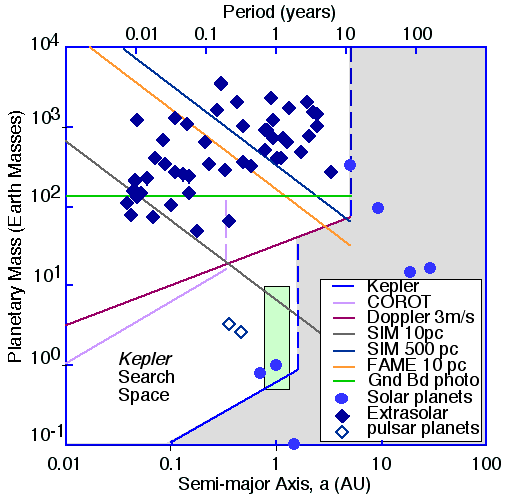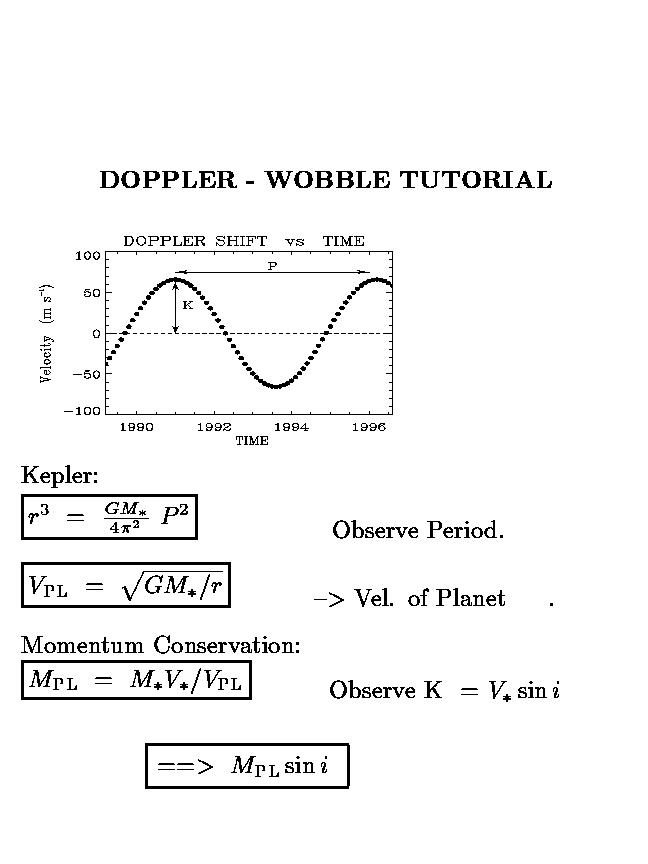Introductory Astronomy: Extrasolar Planets
The number of known planets is rapidly
increasing. 2002 list: 56 candidate planets around 51 nearby
normal stars.

The masses above are in Jupiter masses, and are properly divided
by sin(i), where "i" refers to the inclination angle, which
is unknown except for HD 209458 (in which star i = 90 degrees:
exactly edge-on).
2004 list: 136 planets (image shows 110 of them).
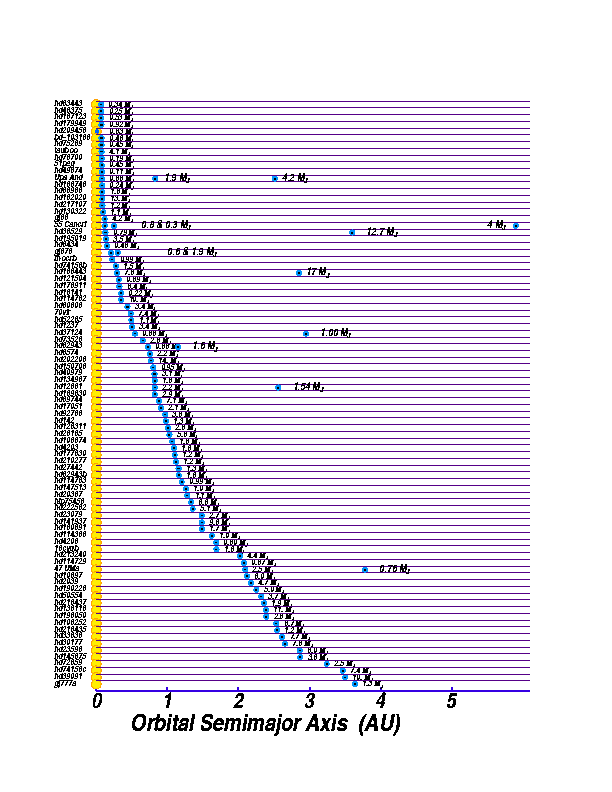
These planets were found by exquisitely accurate measurements of
the doppler shifts of nearby stars. The stars are pulled slightly by
the gravity of their large planets, and this velocity change is
measured over time (in many cases, years.)
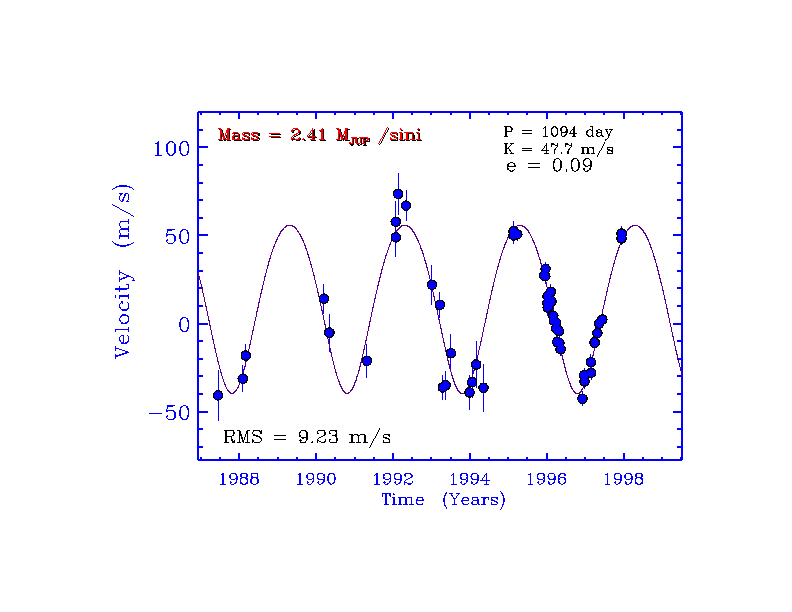
This is a typical velocity curve as obtained by Marcy and Butler.
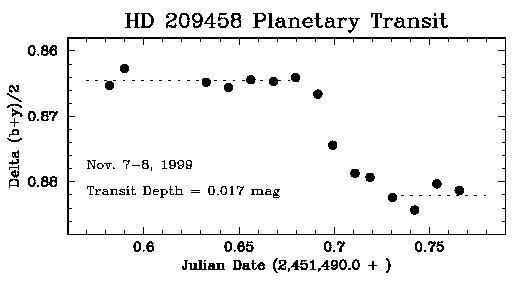
The star HD 209458 is unique in that
the planet was seen to transit across the face of the star, thereby
dimming it. The light curve as the planet began its crossing is shown
above. Photometry by Greg Henry.

Precision photometry of transits is another valuable survey tool. Only
planets with i=0 orbits can be discovered, but the period of
oscillation gives a mass. Earths can be found if the search goes on a
long time at a starlight measurement precision of <1 part in
10,000. Graphic below is from the proposed Kepler mission.
